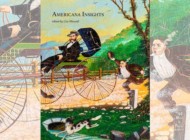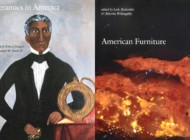Just in time for the holidays, we rounded up some of our favorite art books for you, your coffee table and everyone on your list this year. The titles are expansive and beckoning, spanning individual artists, gems, keys, carpets, ceramics and more.
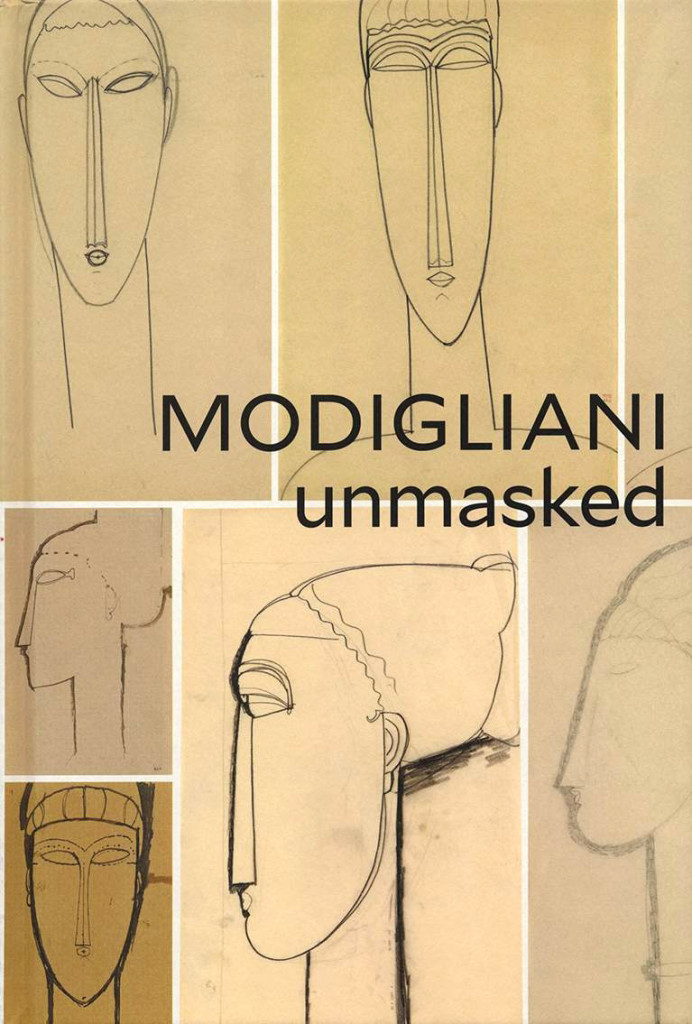
Modigliani Unmasked by Mason Klein, Yale University Press, PO Box 209040, New Haven CT, published in association with the Jewish Museum, New York, 2017; 172 pages, 165 color and five black and white illustrations, hardcover, $50.
An illuminating study of Amedeo Modigliani’s early drawings and how they reflect the artist’s conception of identity accompanies an exhibition currently on view at the Jewish Museum through February 4.
One of the great artists of the Twentieth Century, Amedeo Modigliani (1884–1920) is celebrated for revolutionizing modern portraiture, particularly in his later paintings and sculpture. Mason Klein, curator at the Jewish Museum, examines the artist’s rarely seen early works on paper, offering revelatory insights into his artistic sensibilities and concerns as he developed his signature style of graceful, elongated figures.
An Italian Sephardic Jew working in turn-of-the-century Paris, Modigliani embraced his status as an outsider, and his early drawings show a marked awareness of the role of ethnicity and race within society. Placing these drawings within the context of the artist’s larger oeuvre, Klein reveals how Modigliani’s preoccupation with identity spurred the artist to reconceive the modern portrait, arguing that Modigliani ultimately came to think of identity as beyond national or cultural boundaries.
Lavishly illustrated with the artist’s paintings and more than 100 drawings collected by Dr Paul Alexandre, Modigliani’s close friend and first patron, this book provides an engaging and long overdue analysis of Modigliani’s early body of work on paper. Richard Nathanson, an independent art adviser and an expert on Impressionism and Twentieth Century art, contributes an afterword.
—WD
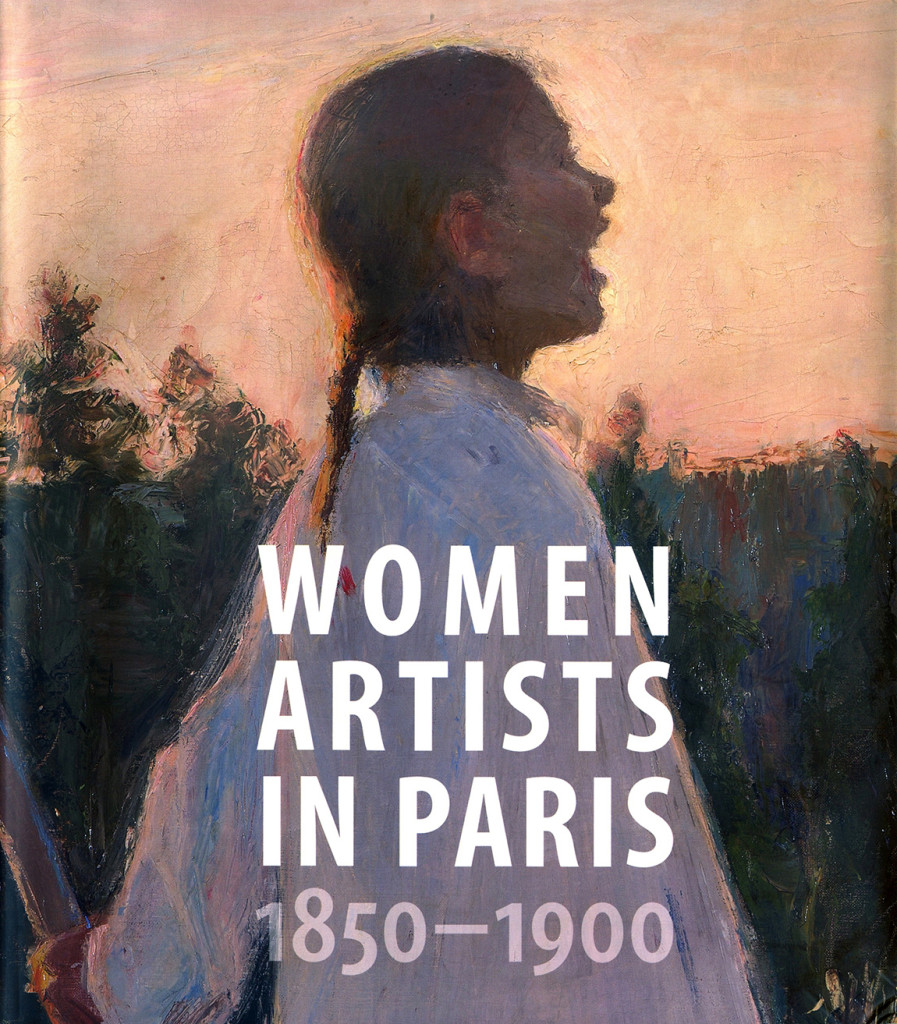
Women Artists in Paris, 1850–1900 by Laurence Madeline with Bridget Alsdorf, Richard Kendall, Jane R. Becker, Vibeke Waallann Hansen and Joëlle Bolloch; Yale University Press, https://yalebooks.yale.edu, and American Federation of Arts www.amfedarts.org, 2017; 278 pages, hardcover, $47.
During the second half of the Nineteenth Century, formal art education was a decidedly male pursuit. It was this way everywhere around the world, but one place: Paris. The oppressive nature of formal society and the institutional art world pushed forward an unsung hero in the City of Light as it served as a beacon for women artists searching for formal training in the city’s private studio schools, salons and galleries.
Women Artists in Paris, 1850–1900 is the hardcover publication that accompanies the noteworthy traveling exhibition by the same name, presented by the American Federation of the Arts, currently on view at the Denver Art Museum until January 14.
The exhibition surveys nearly 90 paintings by 37 women artists, from the famous luminaries of the age Mary Cassatt and Berthe Morisot to some profoundly talented lesser-known artists like Anna Ancher, Marie Bashkirtseff and Paula Modersohn-Becker.
In her foreword, Laurence Madeline writes, “Nearly a half-century has passed since Linda Nochlin archly posed the question: ‘Why have there been no great women artists?’ In a revolutionary article bearing this title, Nochlin was the first to publicly confront an assumption that had been latent for decades and demonstrates the enormous contributions of women to art history and art education. Nochlin’s words uncannily echo the painter Marie Bashkirtseff, who, writing under the pseudonym of Pauline Orell in 1881, demanded access for women to the state-sanctioned École des Beaux-Arts (School of Fine Arts): ‘We are asked with indulgent irony just how many great women artists there have been.’ In the time between these provocative comments, great strides have been made in expanding the canon, and women artists have come to be viewed in a radically different light.”
A different light, indeed. The publication accompanies essays that survey the influential work of women Impressionists, representations of the female artist in portraiture, the singular experiences of Nordic women artists and the presence and determination of women artists throughout the history of the Paris Salon. An important exhibition and an equally important publication for anyone who enjoys women’s studies and Nineteenth Century art.
—GS
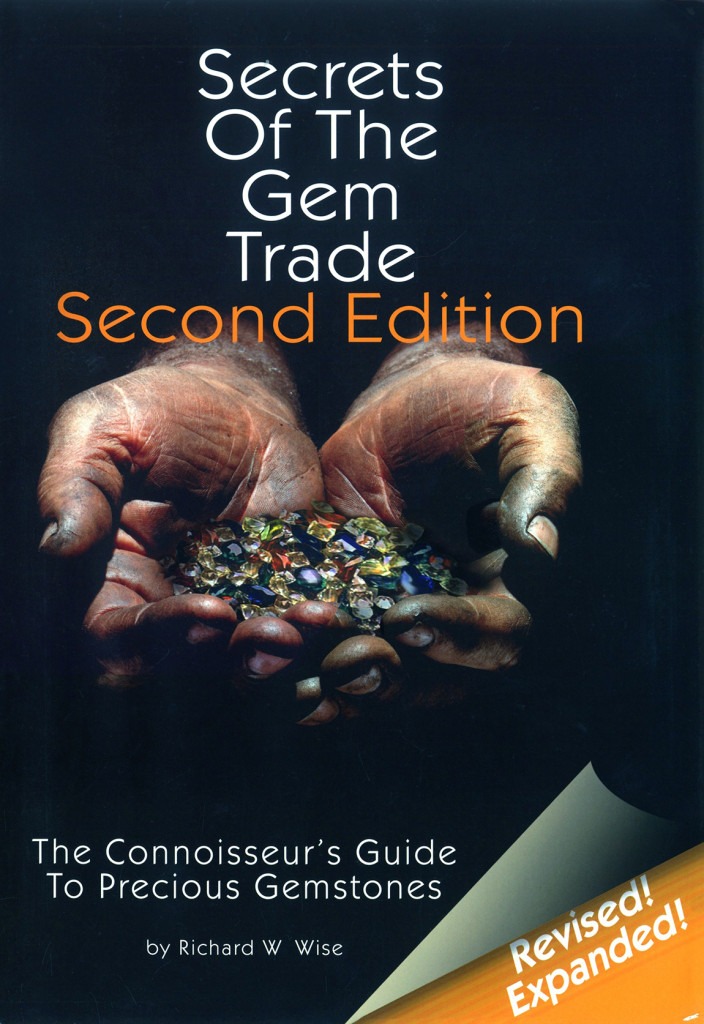
Secrets of the Gem Trade: Second Edition by Richard W. Wise, published by Brunswick House Press, Lenox, Mass., 2016; 385 pages, hardcover, $99.95.
The gem market changes. Some mines run dry as new sources spring forth, offering gemstones with colors and qualities never before seen or offered to the public. These are only a few reasons to look into Richard Wise’s Secrets of the Gem Trade, Second Edition. Five new introductory essays and ten new chapters have been added, along with a host of illustrative photographs that aim to give readers a historically rooted, yet up-to-date and immersive picture of the wonderful world of gems.
As readers of his first book may know, Wise’s first-hand travels and study inform much of his writing. In his preface, Wise writes, “My travels have continued. I have spent time buying emerald in Bogotá and visited the mines of Botacá, broadening and deepening my understanding of emerald. Several excursions along Jade Row at the Hong Kong Gem Show, together with a visit to the jade market in Guangzhou, China, has sharpened my understanding, I hope, of that inscrutable gem.”
In addition to dedicating chapters to singular gems, their mining histories and their current sources, Wise focuses on other aspects that many readers in the trade would find valuable: grading, clarity, hue, color and color effects, cuts, rarity and many more. The book is an invaluable resource for those who wish to learn or keep up to date on the ever-changing gemstone market.
—GS
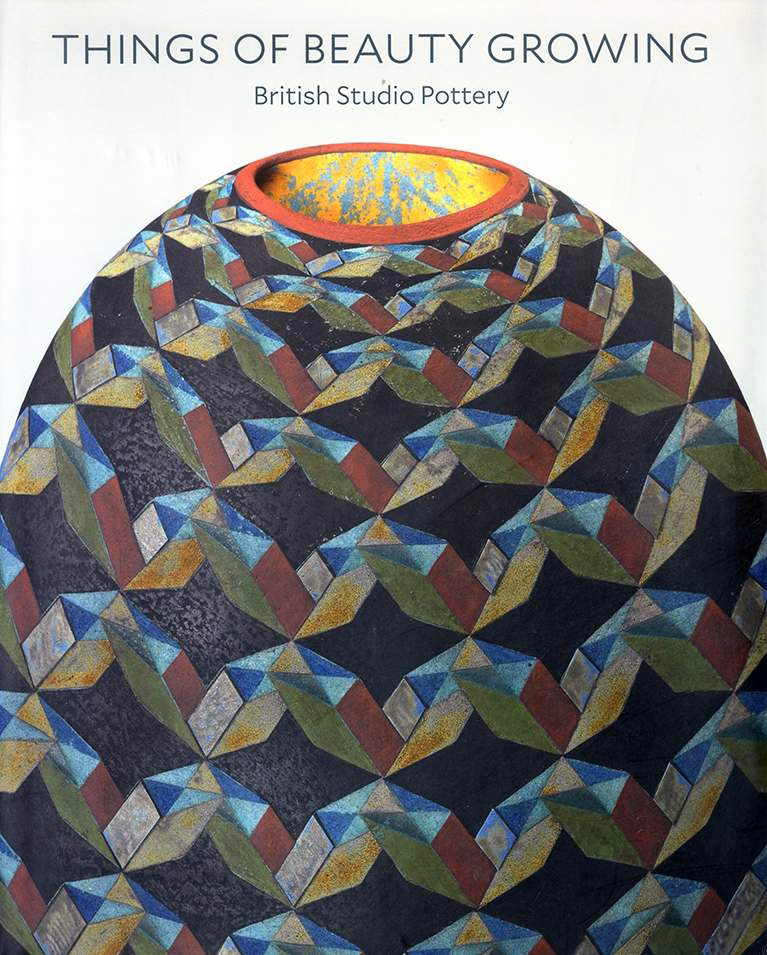
Things of Beauty Growing: British Studio Pottery. Edited by Glenn Adamson, Martina Droth and Simon Olding, with contributions by Glenn Adamson, Alison Britton, Kimberley Chandler, Edward S. Cooke, Jr, Penelope Curtis, Tanya Harrod, Imogen Hart, Sequoia Miller, Simon Olding and Julian Stair. Published by the Yale Center for British Art and the Fitzwilliam Museum in association with Yale University Press, 2017; 392 pages, hardcover, $65.
Britain’s great ceramics tradition was well established by the Twentieth Century, when trailblazers Bernard Leach and Lucie Rie transformed the field with new approaches to the medium. This gorgeous volume accompanies the exhibition of the same name that opened in September at the Yale Center for British Art and travels to Cambridge University’s Fitzwilliam Museum.
Heavily illustrated, it merges the practical and theoretical, offering a variety of constructs by which to evaluate modern and contemporary British pottery and porcelain. Six essays by noted scholars explore the theory of making, while catalog entries organize objects by form. For those looking for practical direction, the book supplies biographical profiles of artists ranging from Leach, Rie and other early exemplars to contemporary artists, such as Edmund de Waal, whose most recent book, The White Road, is a masterful and highly personal history of porcelain in Asia and the West.
Also useful is the chronology of British studio pottery and the select bibliography. Glenn Adamson’s inspirational interview with John Driscoll, a paintings dealer with a parallel interest in studio pottery, should whet many a collector’s appetite.
—LB
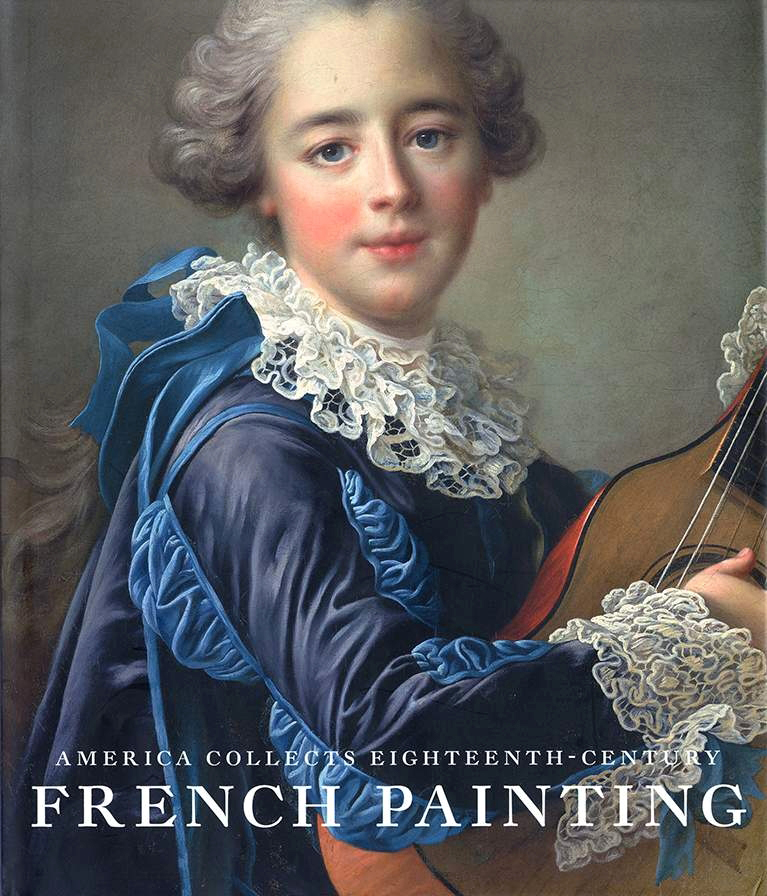
America Collects Eighteenth Century French Painting by Yuriko Jackall, Philippe Bordes, Jack Hinton, Melissa Hyde, Joseph J. Rishel and Pierre Rosenberg with Joseph Baillio, Susan Earle, Christophe Leribault, Robert Schindler and D. Dodge Thompson. National Gallery of Art in association with Lund Humphries, 2017; 304 pages, 232 illustrations, hardcover, $60.
Joseph Bonaparte’s arrival in New York in 1815 touched off lasting American interest in French fine and decorative arts. “What did American collectors, curators and museum directors seek when they went looking for Eighteenth Century French paintings in the ramshackle hallways of the Hôtel Drouot or (more likely) the velvet-lined rooms of dealers in the Faubourg Saint-Honoré and on Madison Avenue?” National Gallery of Art director Earl A. Powell III asks in his foreword.
In response to Powell’s question, the companion volume to the precedent-setting exhibition at the National Gallery of Art earlier this year examines the record of that interest as embodied in American public and private collections. Having assembled 68 paintings from 48 American museums in 25 states, Yuriko Jackall, the NGA’s assistant curator of French paintings and organizer of the exhibition, marshals an all-star cast of experts to explore issues of taste, consumption and display. Jackall’s introductory essay introduces prominent dealers such as the Brothers Goncourt and the Gilded Age souvenir hunter Alva Vanderbilt, among others.
Wildenstein Gallery, founded in Paris at the end of the Franco-Prussian war, merits a chapter of its own. Essayist Joseph Baillio follows the story well into the Twentieth Century with discussions of Wildenstein’s collaboration with Mr and Mrs Charles Wrightsman, Duncan Phillips, Norton Simon, the Rockefellers and others. Jack Hinton looks at French period rooms in America. Among many unexpected pleasures is Robert Schindler’s tale of Birmingham socialite Eugenia Woodward Hitt, who left her collection, formed between the 1950s and 1970s, to the Birmingham Museum of Art.
Researchers will find useful an accompanying chronology, which begins with Bonaparte and concludes with a new wave of museum acquisitions in 2016.
—LB
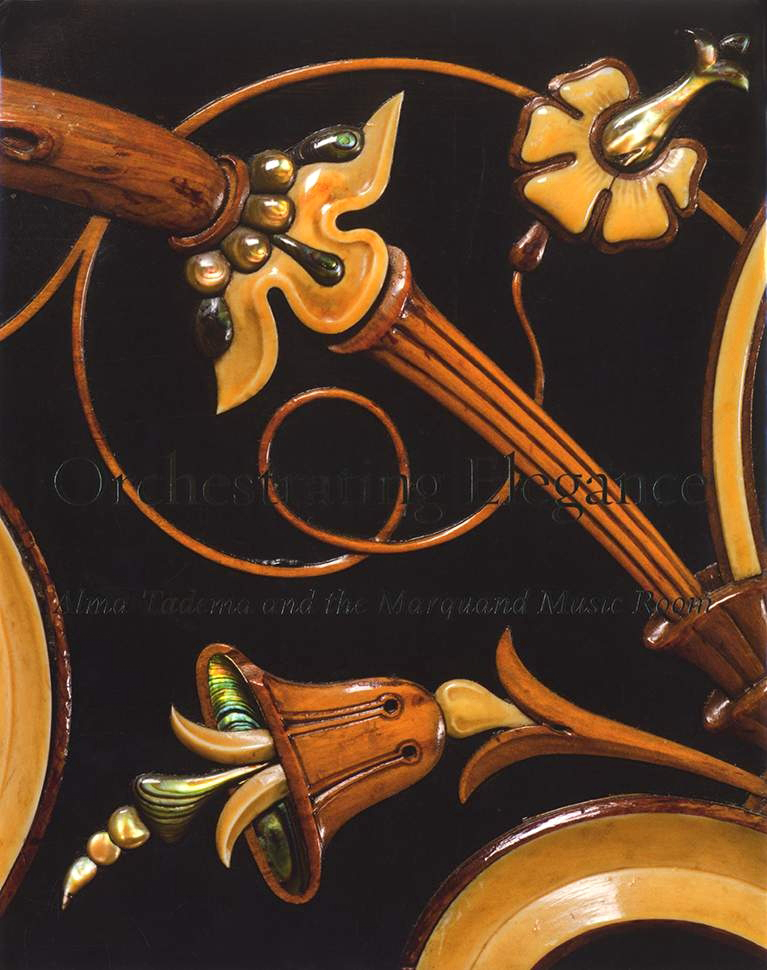
Orchestrating Elegance: Alma-Tadema and the Marquand Music Room. Edited by Kathleen M. Morris and Alexis Goodin, with contributions by Kathleen M. Morris, Alexis Goodin, Melody Barnett Deusner and Hugh Glover. Published by the Clark Art Institute, distributed by Yale University Press, 2017; 232 pages, 157 illustrations, hardcover, $50.
From the standpoint of interior design and the artists, craftsmen, designers, merchants and consumers who contributed to it, the second half of the Nineteenth Century is a complex era, poorly understood. This makes Orchestrating Elegance all the more welcome.
Dense and compact, the handsome volume marries period photographs of interiors, architectural plans and drawings with new photography of objects housed in the room. The story swirls around the Greco-Pompeian music room of financier, art collector and philanthropist Henry Gurdon Marquand and British painter Sir Lawrence Alma-Tadema (1836–1912), with whom Marquand worked. Alma-Tadema secured Frederic Leighton (1830–1896) to create a major painting for the room’s ceiling. Sir Edward Poynter (1836–1919) painted the piano’s fallboard. One of Alma-Tadema’s most famous works, “A Reading from Homer,” was painted for the room. All are brought together in this volume for the first time since Marquand’s death in 1902.
Of special note is Morris’s focused history of Johnstone, Norman & Co., which manufactured the music room furniture between 1884 and 1887. The company substantially declined after 1893 and disappeared around 1911.
Editor and author Morris is director of collections and exhibitions, and curator of decorative arts, at the Clark Art Institute.
—LB
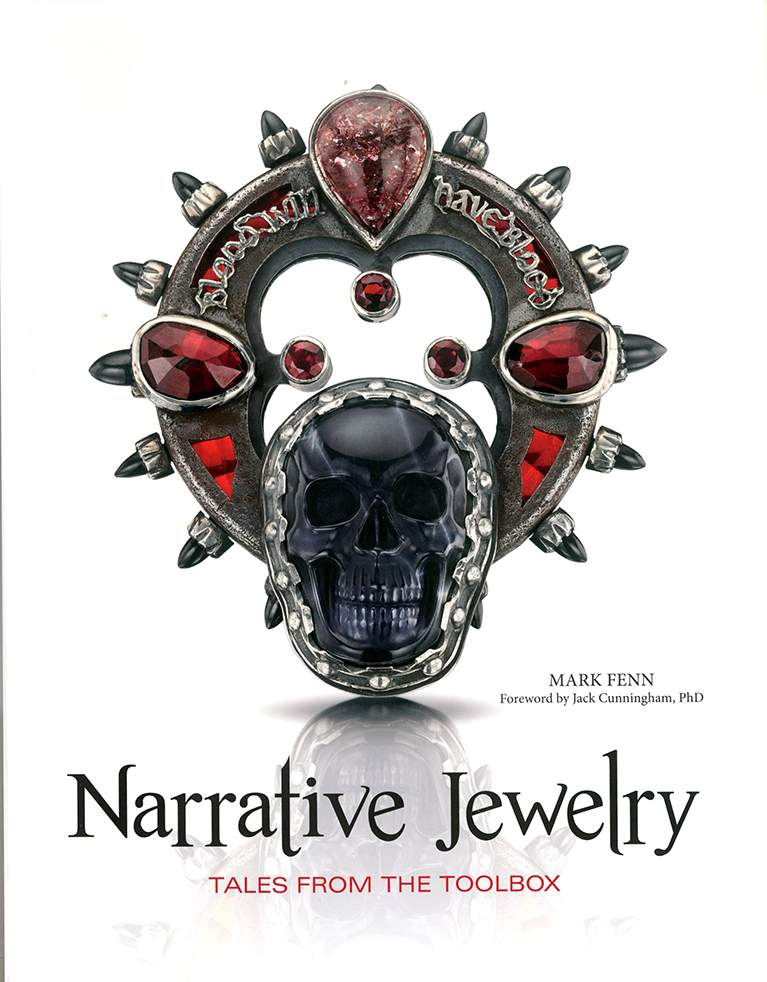
Narrative Jewelry: Tales from the Toolbox by Mark Fenn, foreword by Jack Cunningham, Schiffer Publishing Ltd, 2017; 304 pages, 450 illustrations, hardcover, $60.
More than 240 makers of jewelry from around the world are featured in a coffee-table volume devoted to narrative jewelry. The term, Jack Cunningham explains in the book’s foreword, designates a specific genre of contemporary studio jewelry, which is currently enjoying widespread popularity. Wearable art and small-scale sculpture, the exquisite specimens selected by jeweler Mark Fenn are united in the exceptional degree to which they catch the eye and demand contemplation.
The book grew out of the honors thesis Fenn wrote while a student at the University for Creative Arts in the United Kingdom. His curated selection supplies dealers, collectors and curators with a list of makers to watch, along with a wish list for the acquisitive.
—LB
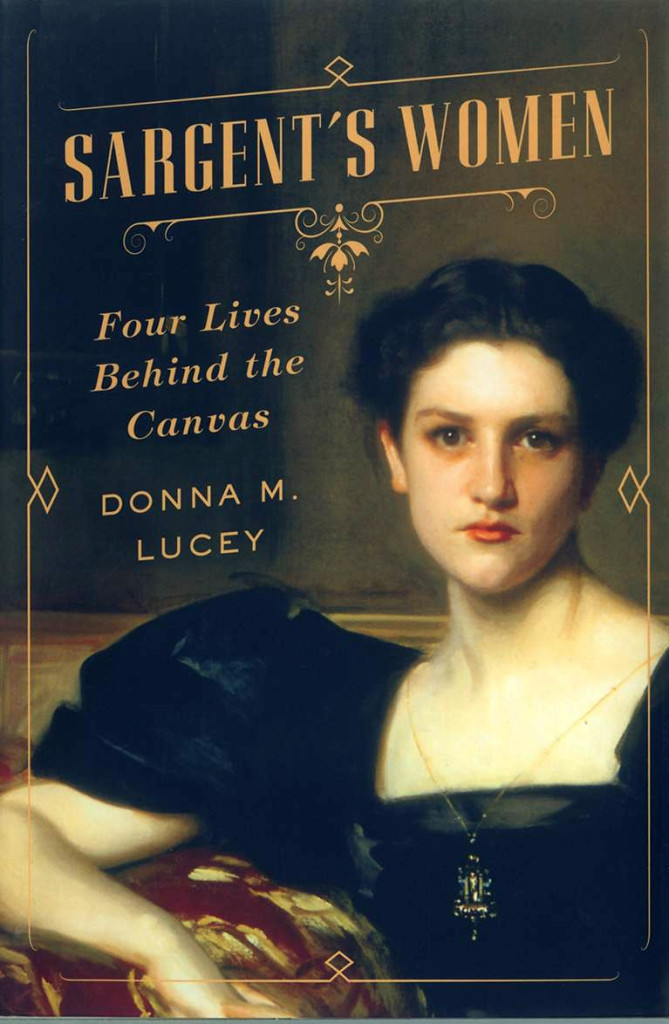
Sargent’s Women: Four Lives Behind the Canvas by Donna M. Lucey, W.W. Norton & Company, 2017; 320 pages, hardcover, $29.95.
Settle back in a comfortable chair. A good read is in store with Sargent’s Women. This vivid adventure by Donna M. Lucey — author of Archie and Amélie: Love and Madness in the Gilded Age, a 2017 writer-in-residence at Edith Wharton’s the Mount and media editor at the Virginia Foundation for the Humanities — moves from the atmospherically half-timbered Inghtham Mote in Kent, England to the Fuller family farm in Deerfield, Mass., and the Chanler Mansion in New York’s Hudson Valley, finally alighting at Taormina, near the slopes of Mount Etna in Sicily.
Compiled from original letters and diaries, Lucey’s interwoven text considers four women painted by Sargent: Elsie Palmer, Sally Fairchild, Elizabeth Chanler and, the best known of the quartet, Isabella Stewart Gardner. Lucey visited the places these extraordinary women frequented and delved into the papers they left behind. Sargent’s portraits, writes Lucey, “reveal the carefully crafted paradox that lies at the heart of Sargent’s work and gives it its tension. If you walk through museum galleries looking for Gilded Age spectacle you will find it, but you will miss Sargent’s truth: He painted illusion that shared space with its own undoing.”
—LB
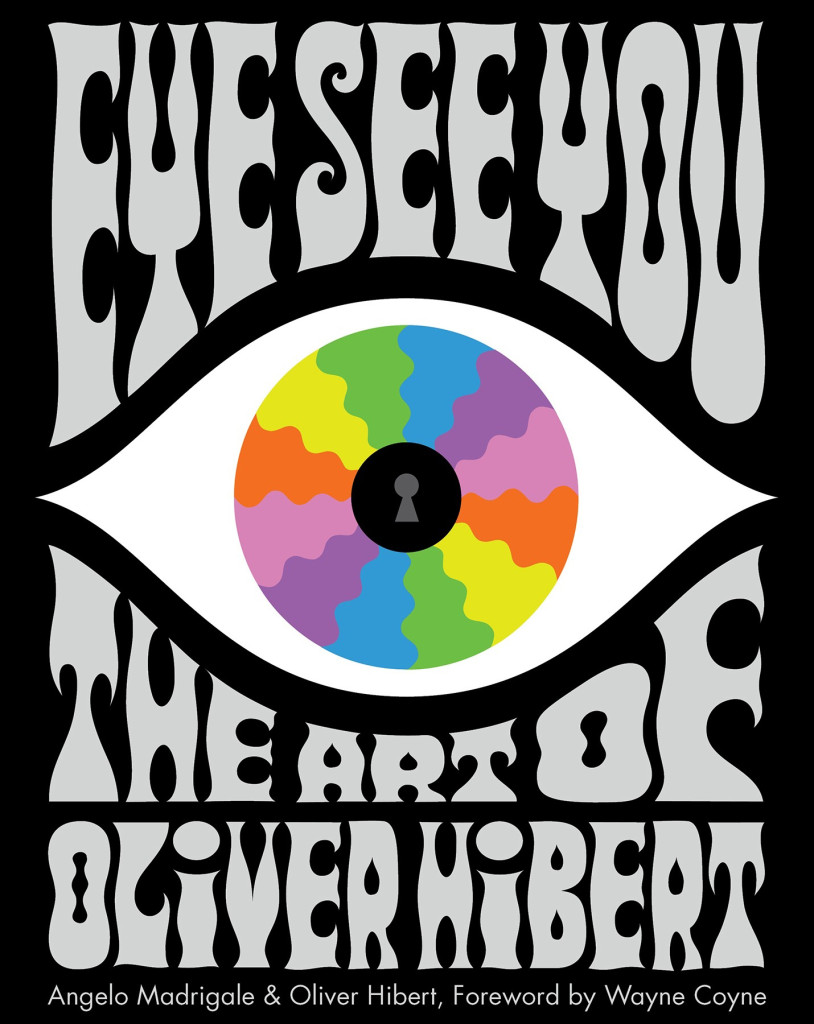
Eye See You: The Art of Oliver Hibert by Angelo Madrigale and Oliver Hibert, Schiffer Publishing, Ltd, www.schifferbooks.com, 2017; 176 pages, 283 color images, hardcover, $34.99.
In this first survey of his career, neo-psychedelic artist Oliver Hibert blends in as living art among examples of his art, illustration and design, including his unique recreation of the tarot deck. Building off of features in publications, including Juxtapoz, Hi-Fructose and Beautiful Decay, this title breaks down Hibert’s quest for the “Superflat” using his favored medium of acrylic and addresses the question of what happens when an artist tackles commercial assignments.
His body of work is connected through color and inspiration from the 1960s, an aesthetic that has attracted the likes of The Flaming Lips for whom Hibert has created posters, tour apparel and album covers. With well over 200 images, Eye See You also shows just how prolific the artist is, covering his paintings, sculpture and drawings, as well as his many projects for clients such as Nike, Fender Guitars, Miley Cyrus and Creature Skateboards. This is a must-have and insightful work for collectors and fans of contemporary art.
Angelo Madrigale lives and works in New York City. He and his wife Lisa were the former owners and directors of the Metropolis Gallery, named one of the world’s “Top 100 Galleries” by Juxtapoz Magazine in 2010. This is his first book.
—WD
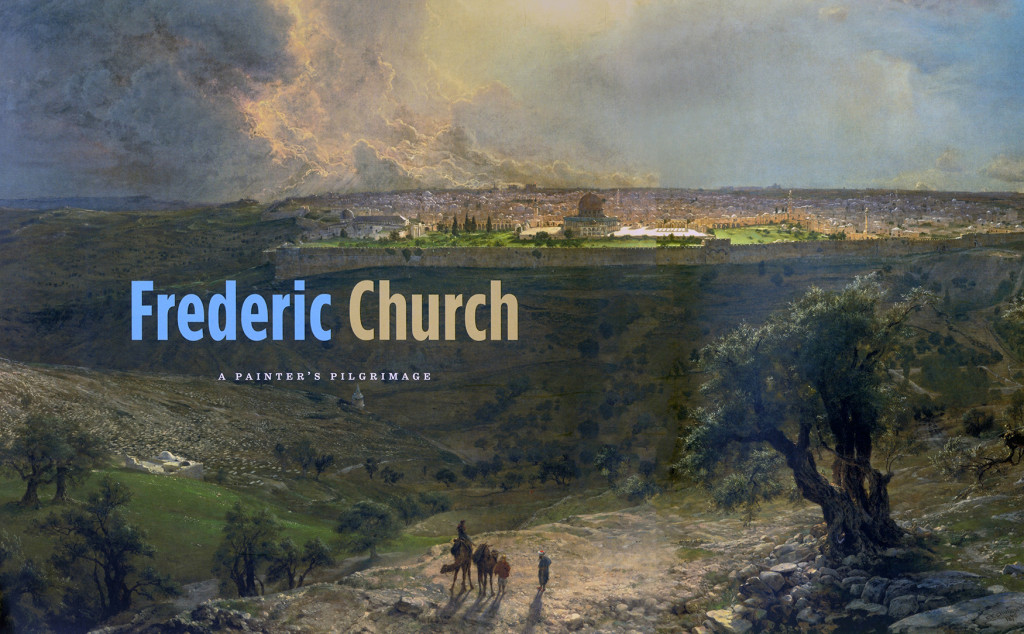
Frederic Church: A Painter’s Pilgrimage by Kenneth J. Myers, Kevin J. Avery, Gerald L. Carr and Mercedes Volait. Detroit Institute of Art, www.dia.org, distributed by Yale University Press, www.yalebooks.com/art; 2017; 230 pages, soft cover, $45.
Frederic Church (1826–1900), one of the leading painters of Nineteenth Century America and the Hudson River School, also journeyed around the globe to find fresh inspiration for his highly detailed compositions. In a beautiful overview of Church’s less well-known paintings of the classical world and the Holy Land, this volume is a catalog to an exhibition of the same name, with the addition of several scholarly essays by the authors.
Kenneth J. Myers is curator of American art at the Detroit Institute of Arts (DIA), where the exhibition was organized and will be on view through January 15. He wrote the introduction: On the Road with Frederic and Isabel Church, and the entry on Jerusalem, which looks at Church’s relationship with Christianity.
Among Church’s lesser-known masterpieces are his paintings of the Middle East, Italy and Greece, produced in the late 1860s through late 1870s, which explore themes of human history and achievement.
Taking a closer look at this geographical and thematic shift in Church’s practice, this book brings together the artist’s major paintings of Athens, Rome, Jerusalem and the surrounding region. The essays concentrate on a set of six major paintings of architectural and archaeological marvels; one essay also spotlights Olana, Church’s home in New York State, which reflects the influence of Middle Eastern design.
Other authors include Kevin J. Avery, senior research scholar at the Metropolitan Museum of Art, who contributed the chapter on the Parthenon, a site about which Church said, [it is] “The finest edifice on the finest site in the world.”
Gerald L. Carr is an independent scholar who writes about Church as a traveler to the Holy Land. Mercedes Volait, a senior researcher at CNRS and director of the research center InVisu at Institut national d’histoire de l’art, contributed the chapter on the Church’s home on the Hudson River — Olana, a Persian-style home.
After DIA, the traveling exhibition will be on view at the Reynolda House Museum of American Art in Winston-Salem, N.C., from February 8 to May 15; it then goes to the Wadsworth Atheneum Museum of Art in Hartford, Conn., June 3–August 26.
Beautifully illustrated, this volume is a companion to the exhibition but also serves as an in-depth research tool into the life and art of Frederic Church.
—AK
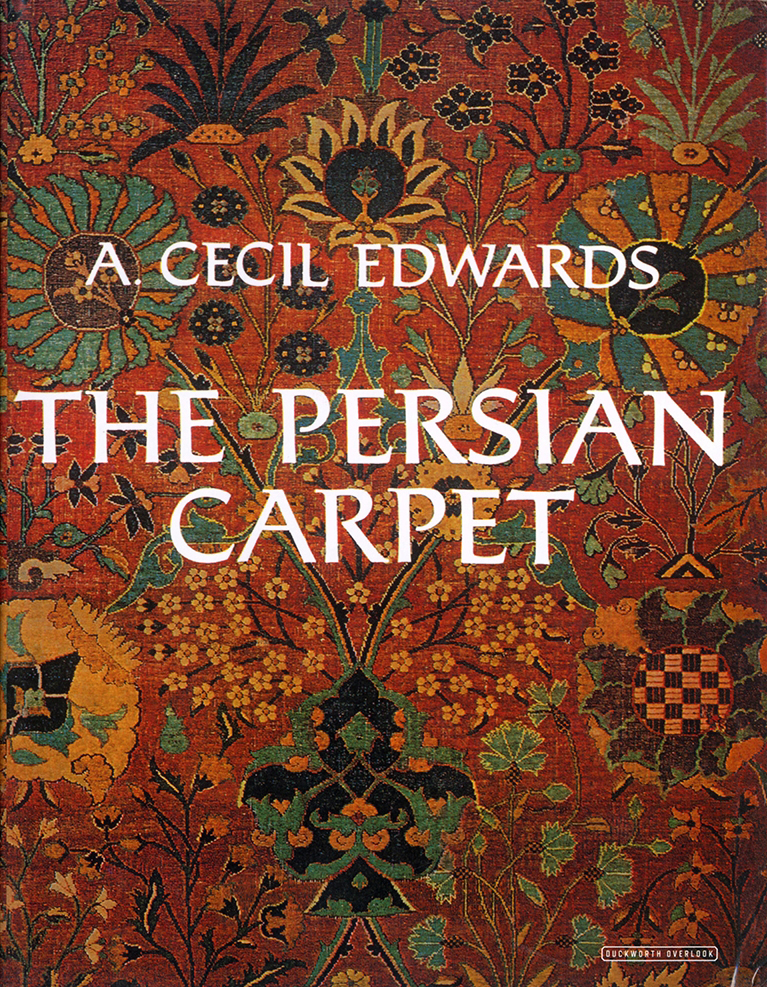
The Persian Carpet: A Survey of the Carpet-Weaving Industry of Persia by A. Cecil Edwards; Duckworth Overlook Press, London, www.duckworth-publishers.co.uk and Overlook Press, New York City, www.overlookpress.com; first published in 1953, reissued 2017; 404 pages, hardcover, $75.
The foremost expert at the time on Persian rugs and textiles, A. Cecil Edwards (1881–1953) spent 50 years in the Persian carpet business before writing what would become the definitive guide to the industry, first published in 1953. Now, 64 years later, Edwards’ classic and extensively illustrated reference work has been republished in a beautiful new package.
Persian rugs fell out of circulation in the United States, to some degree, and Iran’s total carpet exports dropped 30 percent over five years until 2016, when the US lifted sanctions on Iran and carpet sales rose dramatically.
It seemed, to many in the industry, like the perfect time to reissue this definitive work by Edwards, who spent his entire career in the rug business. He was managing director of the renowned Oriental Carpet Manufacturers based in Turkey, where he championed the industry but also acquired knowledge on the history, techniques, range of designs, symbols, motifs, dyeing and regional variations.
Edwards’ expert advice and fascinating cultural and artistic history of the Persian rug is as relevant and accurate as it was when the book was first published. The book is a must have for connoisseurs, collectors, dealers, students or anyone who is entranced by the beauty and history of Persian rugs.
—AK
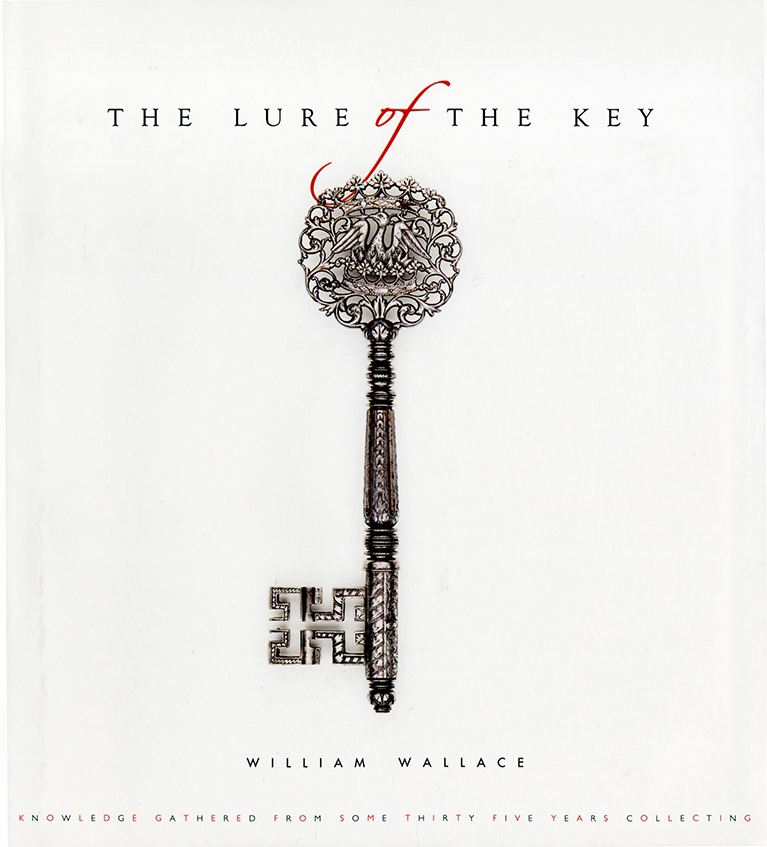
The Lure of the Key: Knowledge Acquired from Some Thirty-Five Years Collecting by William Wallace; Unicorn Press, www.unicornpublishing.org; distributed by the University of Chicago Press, www.press.uchicago.edu, 2017; 142 pages,hardcover, $40.
When William Wallace was vacationing in France almost 40 years ago, he happened on an old door to a recently demolished house, with the key still in the door. The key managed to find its way into his pocket and this British stockbroker began a parallel career, becoming a leading authority on this neglected subject — the key.
Wallace writes in the foreword, “Antique keys come in infinite shapes and sizes, some rustic, some exquisite, all interesting.” He defines the scope of this lovely book, “Fascination is to be found in those handmade articles that were produced before the advance of mass production made their demise inevitable. Between the Middle Ages and the end of Queen Victoria’s reign; … the key is as essential as it is ubiquitous.”
Arranged by topics rather than chronologically, the aim of this slender volume with hundreds of beautifully reproduced color images is to demonstrate the fascination with this everyday object. The 500 years covered by this book show keys to have been of infinite design, shape and artistry; workmanship reaching its zenith at the end of the Seventeenth Century.
Wallace has produced a work of reference and research on the purpose, ownership and pedigree of the keys and others. He provides amusing and interesting anecdotes about keys, as well as an extensive glossary of terms relating the keys and locks they open, as well as collecting suggestions. The chapters range from “What Has Gone Before, “The Components and Purpose of the Key” and “The Apprentice” to “A Golden Age,” “The Age of Elegance” and “Victoriana.” Rounding out the chapters on “Keys of Special Merit” and “Maintenance and Improvement” are a glossary, a bibliography, postscript and, perhaps the most interesting, a list of collections that are open to the public — all, unfortunately for US readers, in Britain and Europe.
Designed like an art book, this would be a lovely gift for any collector or just to fascinate the idle looker.
—AK

